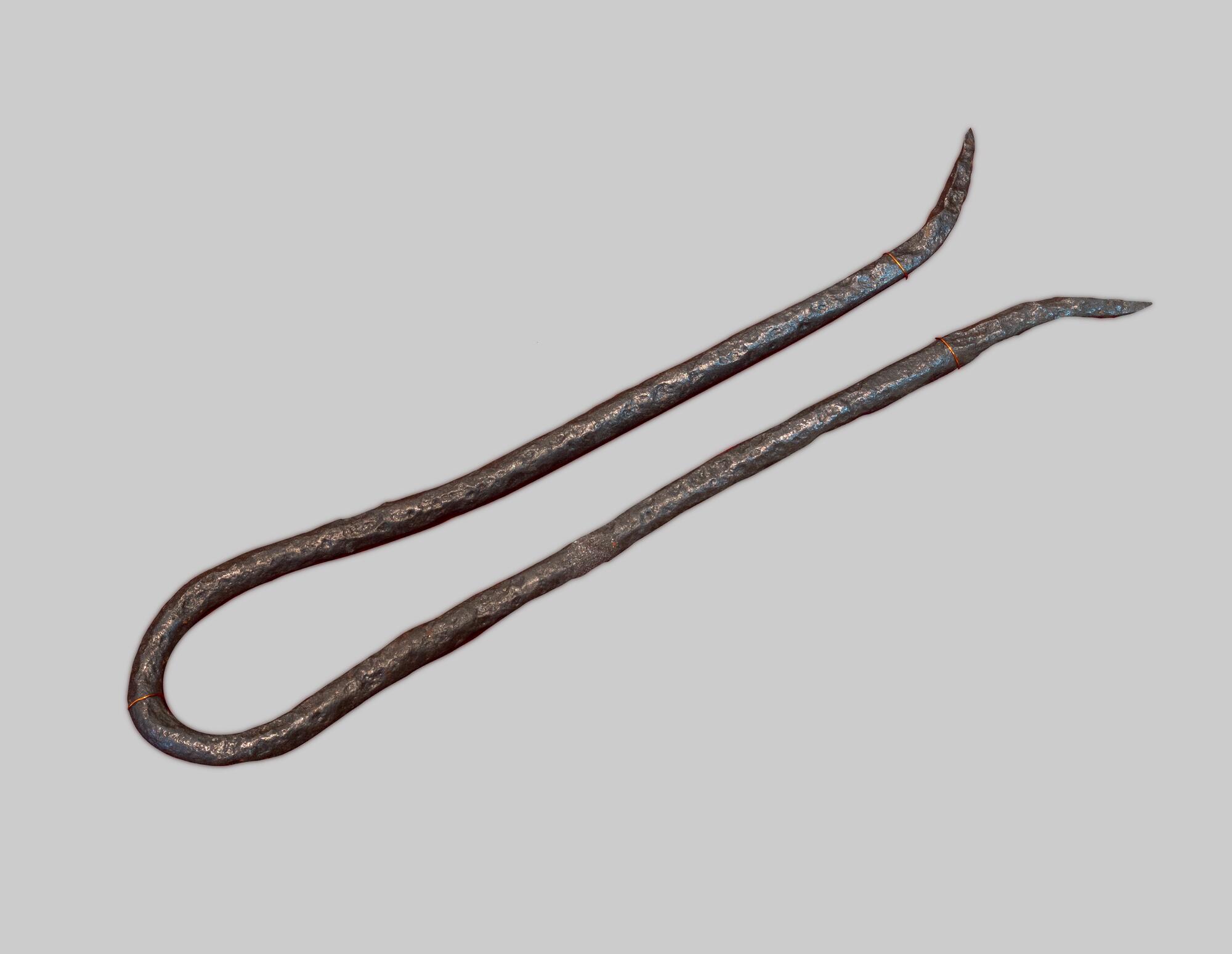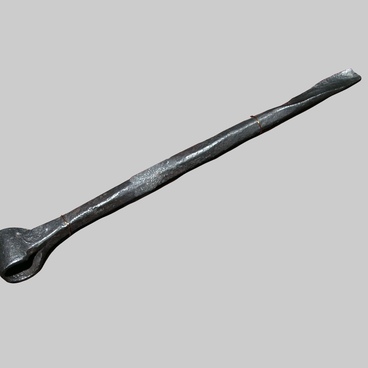Log scriber is a special construction tool to mark levels in carpentry. It is a circular bar bent as a narrow bow with diverging pointed ends.
The log scriber was used while making a log structure for a residential house or a utility building. The name of the tool tells that it was used to mark the visible dap boundaries to be further cut with an axe. Each row of logs had a longitudinal groove for strengthening the log structure. First, the notch and the dap were cut in lower hump of upper logs thus protecting the wooden log structure from rotting due to potential penetration of water.
In XVII century, a new method started to be applied, with sealing grooves cut both on the upper and lower parts of the log simultaneously (‘raznopAz’). Typical for the traditional wooden house building in the Russian North was the roof made without nails (‘samtsOvaya’): progressively shorter logs were raised up to the ridge, with long logs (purlins) framed into the log stumps that completed the house pediment in a triangle, and those purlins were used as the basis for laying think planks on both pitches.
The Siberian housebuilding traditions are mainly borrowed from the Russian North as most of the Russian population of Siberia at the time of its exploration were native of those regions.
The log scriber was used while making a log structure for a residential house or a utility building. The name of the tool tells that it was used to mark the visible dap boundaries to be further cut with an axe. Each row of logs had a longitudinal groove for strengthening the log structure. First, the notch and the dap were cut in lower hump of upper logs thus protecting the wooden log structure from rotting due to potential penetration of water.
In XVII century, a new method started to be applied, with sealing grooves cut both on the upper and lower parts of the log simultaneously (‘raznopAz’). Typical for the traditional wooden house building in the Russian North was the roof made without nails (‘samtsOvaya’): progressively shorter logs were raised up to the ridge, with long logs (purlins) framed into the log stumps that completed the house pediment in a triangle, and those purlins were used as the basis for laying think planks on both pitches.
The Siberian housebuilding traditions are mainly borrowed from the Russian North as most of the Russian population of Siberia at the time of its exploration were native of those regions.



